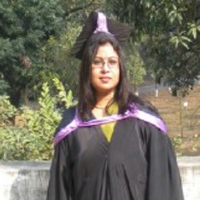International Journal of Information Technology and Computer Science (IJITCS)
IJITCS Vol. 9, No. 6, 8 Jun. 2017
Cover page and Table of Contents: PDF (size: 765KB)
Efficient Sensor-Cloud Communication using Data Classification and Compression
Full Text (PDF, 765KB), PP.9-17
Views: 0 Downloads: 0
Author(s)
Index Terms
Wireless Sensor Network, Cloud Computing, Classification, Compression, Sensor-Cloud Communication
Abstract
Wireless Sensor Network, a group of specialized sensors with a communication infrastructure for monitoring and controlling conditions at diverse locations, is a recent technology which is getting popularity day by day. Besides, cloud computing is a type of high-performance computing that uses a network of remote servers which simultaneously provides the service to store, manage and process data rather than a local server or personal computer. An architecture called sensor-cloud is also providing good services by combining the capabilities from both ends. In order to provide such services, a large volume of sensor network data needs to be transported to cloud gateway with a high amount of bandwidth and time requirement. In this paper, we have proposed an efficient sensor-cloud communication approach that minimizes the enormous bandwidth and time requirement by using statistical classification based on machine learning as well as compression using deflate algorithm with a minimal loss of information. Experimental results describe the overall efficiency of the proposed method over the traditional and related research.
Cite This Paper
Md. Tanvir Rahman, Md. Sifat Ar Salan, Taslima Ferdaus Shuva, Risala Tasin Khan, "Efficient Sensor-Cloud Communication using Data Classification and Compression", International Journal of Information Technology and Computer Science(IJITCS), Vol.9, No.6, pp.9-17, 2017. DOI:10.5815/ijitcs.2017.06.02
Reference
[1]W. Zeng, Y. Zhao, W. Song and K. Ou, “Research on Wireless Storage System Key Technologies”, in 4th International Conference on Computer Sciences and Convergence Information Technology, pp. 191-195, 2009.
[2]C. M. Sadler and M. Martonosi, “Data compression algorithms for energy-constraints devices in delay tolerant networks”, in Proceedings of the 4th International Conference on Embedded networked sensor systems (SenSys ’06), pp. 265-278, 2006.
[3]A. Scaglione and S. D. Servetto, "On the Interdependence of Routing and Data Compression in Multi-Hop Sensor Networks, " Wireless Networks, vol.11, no.1-2, pp. 149-160, 2005.
[4]F. Marcelloni and M. Vecchio, "A Simple Algorithm for Data Compression in Wireless Sensor Networks," in IEEE Communications Letters, vol. 12, no. 6, pp. 411-413, 2008.
[5]L. P. Dinesh Kumar, S. Shakena Grace, A. Krishnan, V. M. Manikandan, R. Chinraj and M. R. Sumalatha, "Data filtering in wireless sensor networks using neural networks for storage in cloud," in Proceedings of the International Conference on Recent Trends In Information Technology (ICRTIT), pp. 202-205, 2012.
[6]A. Alamri, W. S. Ansari, M. M. Hassan, M. S. Hossain, A. Alelaiwi, and M. A. Hossain, “A Survey on Sensor-Cloud: Architecture, Applications, and Approaches,” International Journal of Distributed Sensor Networks, vol. 2013, pp. 18, 2013.
[7]P. Kaur and V. Bhardwaj, “Wireless Sensor Networks: A Survey,”International Journal of Advanced Research in Computer Science and Software Engineering, vol. 5, pp 988-994, 2015.
[8]Z. Jiang, X. Jin and Y. Zhang, "A Weather-Condition Prediction Algorithm for Solar-Powered Wireless Sensor Nodes," in Proceedings of the 6th International Conference on Wireless Communications Networking and Mobile Computing (WiCOM), pp. 1-4, 2010.
[9]G. Simon, M. Maroti, A. Ledeczi, G. Balogh, B. Kusy, A. Nadas, G. Pap, J. Sallai, K. Frampton, “Sensor network-based counter sniper system,” in Proceedings of the 2nd International Conference on Embedded Networked Sensor Systems (Sensys ‘04), pp. 1-12, 2004.
[10]J. Yick, B. Mukherjee and D. Ghosal, "Analysis of a prediction-based mobility adaptive tracking algorithm," in Proceedings of the 2nd International Conference on Broadband Networks (BROADNETS), vol. 1, pp. 753-760, 2005.
[11]M. Castillo-Offer, D. H. Quintela, W. Moreno, R. Jordan and W. Westhoff, "Wireless sensor networks for flash-flood alerting," in Proceedings of the Fifth IEEE International Caracas Conference on Devices, Circuits and Systems, pp. 142-146, 2004.
[12]T. Gao, D. Greenspan, M. Welsh, R. R. Juang and A. Alm, "Vital Signs Monitoring and Patient Tracking Over a Wireless Network," in 27th Annual International Conference of the Engineering in Medicine and Biology Society, pp. 102-105, 2005.
[13]K. Lorincz, D. J. Malan, T. R.F. Fulford-Jones, A. Nawoj, A. Clavel, V. Shnayder, G. Mainland, M. Welsh, S. Moulton, "Sensor Networks for Emergency Response: Challenges and Opportunities," IEEE Pervasive Computing, vol. 3, no. 4, pp. 16-23, 2004.
[14]S. K. Dash, J. P. Sahoo, S. Mohapatra, and S. P. Pati, “Sensor-cloud: assimilation of wireless sensor network and the cloud,” in Advances in Computer Science and Information Technology. Networks and Communications, vol. 84, pp. 455–464, 2012.
[15]Harshi. K. Raj, “A Survey on Cloud Computing,” International Journal of Advanced Research in Computer Science and Software Engineering, vol. 4, no. 7, pp. 352-357, 2014.
[16]J. Yick, B. Mukherjee, and D. Ghosal, “Wireless Sensor Network Survey,” Computer Networks: The International Journal of Computer and Telecommunications Networking, vol. 52, no. 12, pp. 2292-2330, 2008.
[17]R. O. Duda , P. E. Hart , D. G. Stork, Pattern Classification (2nd Edition), Wiley-Interscience, 2000.
[18]E. Deza, M. M. Deza, Encyclopedia of Distances, Springer, pp. 94, 2009.
[19]P.-N. Tan, M. Steinbach and V. Kumar, Introduction to Data Mining, Addison-Wesley, ch. 8, pp. 500, 2005.
[20]I. S. Dhillon and D. S. Modha, “Concept Decompositions for Large Sparse Text Data Using Clustering”. Machine Learning, vol. 42, no. 1-2, pp. 143-175, 2001.
[21]E. Alpaydin, Introduction to Machine Learning, MIT Press. p. 9, 2010.
[22]H. Mannila, "Data mining: machine learning, statistics, and databases," In Proceedings of the Eighth International Conference on Scientific and Statistical Database Management, pp. 2-9, 1996.
[23]D. Salomon, G. Motta, Handbook of Data Compression (5th edition), Springer, pp. 16-18, 2009.
[24]L. P. Deutsch, “Deflate compressed data format specification version 1.3,” 1996.
[25]J. Ziv and A. Lempel, “A Universal Algorithm for Sequential Data Compression,” in IEEE Transactions on Information Theory, vol. 23, no. 3, pp. 337-343, 1977.
[26]J. Ziv and A. Lempel, “Compression of individual sequences via variable-rate coding,” in IEEE Transactions on Information Theory, vol. 24, no. 5, pp. 530-536, 1978.
[27]D. A. Huffman, “A method for the construction of minimum redundancy codes,” in Proceedings of the IRE, vol. 40, no. 9, pp. 1098-1101, 1952.
[28]“7-Zip”, [Online]. Available: http://www.7-zip.org/
[29]H. Junninen, A. Lauri, P. Keronen, P. Aalto, V. Hiltunen, P. Hari, M. Kulmala, “Smart-SMEAR: on-line data exploration and visualization tool for SMEAR stations”, Boreal Environment Research (BER), vol. 14, pp. 447-457, 2009.



